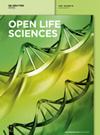摩洛哥中阿特拉斯地区Pistacia atlantica subsp.
IF 1.7
4区 生物学
Q3 BIOLOGY
引用次数: 0
摘要
楷属植物具有显著的生态、经济和药用价值,对环境的适应能力极强。本研究的核心目标是分析摩洛哥中阿特拉斯地区三个不同生物气候带中Pistacia atlantica subsp.研究方法包括对这两个分类群收集树干测量数据并进行大形态学检查,同时对 27 个定性和定量变量进行详细分析。利用扫描电子显微镜(SEM)对叶片进行微观形态分析,以探究叶片大小和气孔密度等具体特征,以及表皮细胞形状和毛状体等定性方面。树干测量显示,树冠表面和每棵树的树干数量可作为两个物种之间的显著特征。关于黄连木亚种的性别比例,59%的受检树木为雄性,主要与干旱地区的枣树和潮湿地区的矮棕榈有关。相比之下,雌性Pistacia terebinthus 的比例与之相似,主要与分布区的橡树林和凯德刺柏有关。生物测量的主成分分析强调了这两个物种之间的显著差异,占总方差的 60.25%。扫描电子显微镜的使用揭示了新的特征,有助于识别这两个物种。通过利用开心果树的宏观形态和微观形态变异,我们可以鉴定出最适合不同生物气候的树种。为此,我们建议将它们纳入旨在恢复衰退生态系统的植树造林和恢复计划中。本文章由计算机程序翻译,如有差异,请以英文原文为准。
A comparative analysis of dendrometric, macromorphological, and micromorphological characteristics of Pistacia atlantica subsp. atlantica and Pistacia terebinthus in the middle Atlas region of Morocco
The genus Pistacia , with its species having notable ecological, economic, and medicinal implications, demonstrates remarkable environmental adaptability. The central objective of the study is to analyze interspecific variations between Pistacia atlantica subsp. atlantica and Pistacia terebinthus across three distinct bioclimatic zones in the Middle Atlas region of Morocco. The methodology includes collecting dendrometric measurements and conducting macromorphological examinations on these two taxa, with a detailed analysis of 27 qualitative and quantitative variables. A micro-morphological analysis of leaves, using scanning electron microscopy (SEM), is employed to explore specific features such as size and stomatal density, as well as qualitative aspects like epidermal cell shape and trichomes. Dendrometric measurements have revealed that the canopy surface and the number of trunks per tree can serve as distinctive features between the two species. Regarding the sex ratio of Pistacia atlantica subsp. atlantica , 59% of the examined trees are males, primarily associated with the jujube tree in arid zones and the dwarf palm in humid areas. In contrast, female Pistacia terebinthus exhibit a similar percentage, predominantly associated with oak groves and cade juniper in their distribution areas. Principal component analysis of biometric measurements emphasized a significant disparity between the two species, representing 60.25% of the total variance. The use of SEM unveiled new features facilitating the identification of the two species. By leveraging the macromorphological and micromorphological variability of pistachio trees, we can qualify those best suited to diverse bioclimates. In this regard, we suggest incorporating them into reforestation and rehabilitation programs aimed at restoring our declining ecosystems.
求助全文
通过发布文献求助,成功后即可免费获取论文全文。
去求助
来源期刊

Open Life Sciences
BIOLOGY-
CiteScore
2.50
自引率
4.50%
发文量
131
审稿时长
43 weeks
期刊介绍:
Open Life Sciences (previously Central European Journal of Biology) is a fast growing peer-reviewed journal, devoted to scholarly research in all areas of life sciences, such as molecular biology, plant science, biotechnology, cell biology, biochemistry, biophysics, microbiology and virology, ecology, differentiation and development, genetics and many others. Open Life Sciences assures top quality of published data through critical peer review and editorial involvement throughout the whole publication process. Thanks to the Open Access model of publishing, it also offers unrestricted access to published articles for all users.
 求助内容:
求助内容: 应助结果提醒方式:
应助结果提醒方式:


